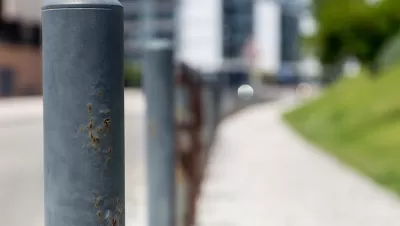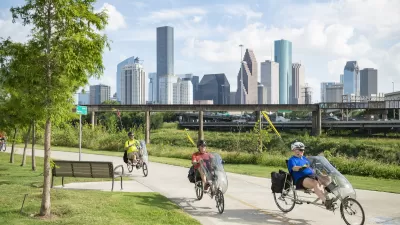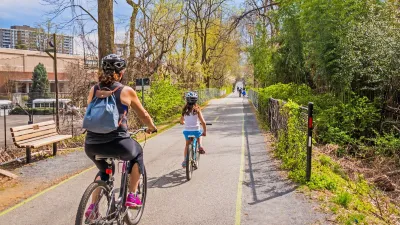Minor pedestrian-oriented improvements alone won't improve walkability if infrastructure still prioritizes fast-moving vehicles, according to this article.

Pedestrian infrastructure projects too often prioritize faster car traffic and fail to implement real protective measures for people walking, argues Joe Cortright. Houston's Energy Corridor, which recently received a high-profile "pedestrian makeover," provides a prime example of the "remedial and performative" projects that, according to Cortright, project the appearance of walkability while maintaining "an auto-dominated and pedestrian hostile environment." With 60,000 cars passing through every day, the newly renovated intersection, with its dangerous "slip lanes," offers minimal safety for pedestrians and cyclists. Aside from the lack of real protection for pedestrians, the area suffers from a lack of walkable destinations. "Pro-tip: any area that describes itself as a 'corridor' is almost always an auto-dominated, pedestrian-hostile space, a place people travel through, rather than being in."
Cortright points to similar examples in other cities, asserting that "much of what purports to be 'pedestrian' infrastructure, is really car infrastructure, and is only necessary in a world that’s dominated by car travel." True pedestrian infrastructure, he writes, includes density, walkable destinations, and fewer, slower cars. "Walkability and pedestrian safety are really about building great places, not piecemeal and largely decorative so-called infrastructure."
FULL STORY: More performative pedestrian infrastructure

Alabama: Trump Terminates Settlements for Black Communities Harmed By Raw Sewage
Trump deemed the landmark civil rights agreement “illegal DEI and environmental justice policy.”

Study: Maui’s Plan to Convert Vacation Rentals to Long-Term Housing Could Cause Nearly $1 Billion Economic Loss
The plan would reduce visitor accommodation by 25% resulting in 1,900 jobs lost.

Planetizen Federal Action Tracker
A weekly monitor of how Trump’s orders and actions are impacting planners and planning in America.

Wind Energy on the Rise Despite Federal Policy Reversal
The Trump administration is revoking federal support for renewable energy, but demand for new projects continues unabated.

Passengers Flock to Caltrain After Electrification
The new electric trains are running faster and more reliably, leading to strong ridership growth on the Bay Area rail system.

Texas Churches Rally Behind ‘Yes in God’s Back Yard’ Legislation
Religious leaders want the state to reduce zoning regulations to streamline leasing church-owned land to housing developers.
Urban Design for Planners 1: Software Tools
This six-course series explores essential urban design concepts using open source software and equips planners with the tools they need to participate fully in the urban design process.
Planning for Universal Design
Learn the tools for implementing Universal Design in planning regulations.
Caltrans
Smith Gee Studio
Institute for Housing and Urban Development Studies (IHS)
City of Grandview
Harvard GSD Executive Education
Toledo-Lucas County Plan Commissions
Salt Lake City
NYU Wagner Graduate School of Public Service





























